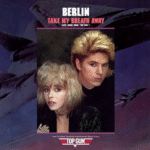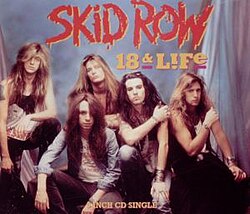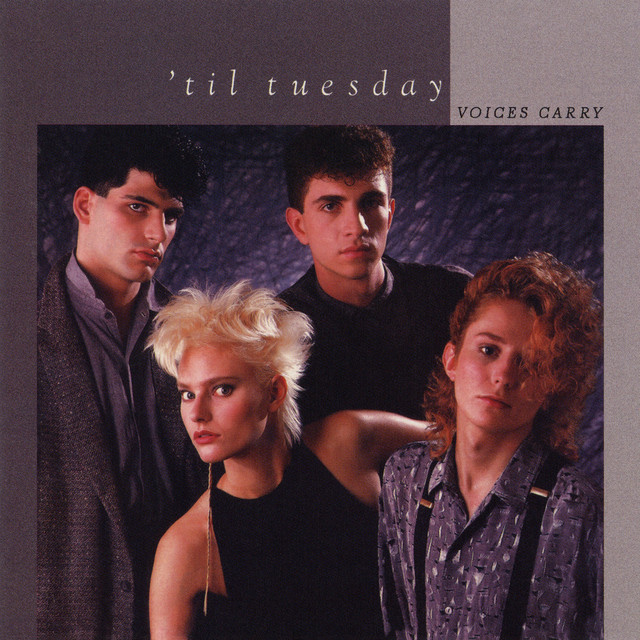 When Top Gun hit theaters in 1986, it didn’t just redefine what an action movie could be—it redefined what a love song could feel like. Amid the roar of F-14 engines and the slick cool of Tom Cruise’s aviator shades, one song emerged that captured something quieter, more intimate, and more eternal. “Take My Breath Away” by Berlin wasn’t just a ballad—it was a cinematic experience in itself. It floated above the explosions and adrenaline, speaking to something deeply human: the kind of love that stops time, makes the world blur, and—yes—literally takes your breath away.
When Top Gun hit theaters in 1986, it didn’t just redefine what an action movie could be—it redefined what a love song could feel like. Amid the roar of F-14 engines and the slick cool of Tom Cruise’s aviator shades, one song emerged that captured something quieter, more intimate, and more eternal. “Take My Breath Away” by Berlin wasn’t just a ballad—it was a cinematic experience in itself. It floated above the explosions and adrenaline, speaking to something deeply human: the kind of love that stops time, makes the world blur, and—yes—literally takes your breath away.
The song wasn’t written by Berlin’s members at all, but by Giorgio Moroder and Tom Whitlock, a pairing that defined an era of synth-driven emotion. Yet it became Berlin’s signature song, the one that catapulted them from underground new wave icons into pop immortality. To this day, it remains one of the most hauntingly beautiful love songs ever recorded—otherworldly yet achingly real, a perfect marriage of sound and emotion that still gives listeners goosebumps nearly forty years later.
The Birth of a Power Ballad in the Jet Age
1986 was the year of cinematic spectacle. Everything was louder, bigger, flashier—and then came this slow, pulsing ballad that defied all that excess. “Take My Breath Away” first appeared on the Top Gun soundtrack, which was already filled with adrenaline-charged tracks like Kenny Loggins’ “Danger Zone.” But where “Danger Zone” was all velocity, “Take My Breath Away” was gravity. It grounded the movie in emotion.
Giorgio Moroder, the legendary Italian composer behind disco and synthpop classics for Donna Summer and Blondie, was tasked with creating the song that would underscore Top Gun’s romantic subplot. He teamed up with lyricist Tom Whitlock, who crafted words that were both minimal and deeply evocative. The result was a piece of music that felt simultaneously futuristic and timeless—a love song not of candlelight and roses, but of starlight and speed.
Berlin, fronted by the inimitable Terri Nunn, were chosen to perform it. Up to that point, Berlin had carved out a niche in the Los Angeles new wave scene with songs like “The Metro” and “No More Words,” balancing icy synths with Nunn’s emotional vocals. But nothing in their catalog had the cinematic sweep or emotional gravity of “Take My Breath Away.”
When Moroder played them the demo, the band wasn’t initially sure it fit their style. But once Terri Nunn stepped up to the microphone, everything changed. Her voice—vulnerable yet strong, cool yet passionate—transformed the song. It wasn’t just a performance; it was possession.
The Sound of Suspended Time
From the very first note, “Take My Breath Away” feels suspended in air. The bassline moves in slow, hypnotic circles. The synth pads shimmer like city lights reflecting off glass. A simple drum machine heartbeat pulses beneath it all, steady and patient, as if time itself is being held still.
Then comes Terri Nunn’s voice—soft, breathy, almost uncertain at first. “Watching every motion in this foolish lover’s game…” It’s the sound of observation and surrender all at once. The song builds not through volume, but through texture. Moroder’s production layers each element with surgical precision, creating a soundscape that feels both intimate and vast, like a love story unfolding in the sky.
The chorus—“Take my breath away…”—isn’t shouted. It’s whispered. That restraint is what gives it power. It’s not desperation or melodrama—it’s awe. It’s the sound of someone realizing they’re completely consumed by another person, and there’s no going back.
This isn’t a song about teenage romance or heartbreak. It’s about the moment when love becomes overwhelming—when it transcends logic, safety, and maybe even self-preservation. It’s the moment that makes you weak in the knees and strong in the soul.
A Song That Defined a Movie
Top Gun was already destined to be an icon. It had fighter jets, military bravado, Tom Cruise in his prime, and the slickest aerial cinematography Hollywood had ever seen. But what it didn’t have—until Moroder and Whitlock wrote it—was an emotional core.
“Take My Breath Away” changed that. It became the romantic heartbeat of the film, soundtracking the passionate, slow-motion chemistry between Cruise’s Pete “Maverick” Mitchell and Kelly McGillis’ Charlotte “Charlie” Blackwood. The scene where it plays—a dusky, slow-burning love scene backlit by blue light and soft shadows—became instantly legendary.
The song elevated the film beyond action and adrenaline. It gave Top Gun heart. Without it, the movie might have been just another macho thrill ride. With it, it became something more universal—a story about risk, vulnerability, and connection.
And audiences felt it. The single shot up the Billboard charts, reaching No. 1 in the U.S. and topping charts across Europe and beyond. It went on to win the Academy Award and Golden Globe for Best Original Song in 1987, and it turned Berlin into global superstars.
Terri Nunn’s Defining Moment
Terri Nunn deserves special credit for what she brought to “Take My Breath Away.” Her performance remains one of the most emotionally honest vocal takes of the decade. Where many ’80s singers might have belted or oversold the drama, Nunn holds back just enough.
Her phrasing is delicate, full of breath and longing, as if she’s trying to hold onto something she knows is already slipping away. That fragility gives the song its ache. She doesn’t sound like she’s performing for an audience; she sounds like she’s singing to one person—quietly, privately, desperately.
It’s the kind of vocal performance that lingers. Even today, it’s hard to separate Nunn’s voice from the word “love” itself—it’s become part of pop culture’s collective consciousness. You can hear the influence in later artists like Lana Del Rey, The Weeknd, and even synth-driven indie acts who chase that same cinematic intimacy.
The Moroder Magic
Giorgio Moroder was already a legend when he wrote “Take My Breath Away.” He’d pioneered electronic music throughout the 1970s, creating dance anthems like Donna Summer’s “I Feel Love” and Blondie’s “Call Me.” But this song showed another side of his genius—his ability to make electronic music emotional.
Everything about “Take My Breath Away” feels alive. The synths breathe, the bass pulses, and the arrangement builds in waves, mimicking the ebb and flow of passion. Moroder didn’t just write a ballad—he created an atmosphere.
His production bridges the gap between human emotion and machine precision. That tension—the warmth of the voice against the cold perfection of the synth—mirrors the film’s themes perfectly: humanity inside technology, love within danger.
And while “Take My Breath Away” might sound lush and dreamy, it’s deceptively complex. Moroder uses modulation, reverb, and sustain in ways that make every note hang in midair. The result is a song that doesn’t just play—it haunts.
Love, Loneliness, and the Cold Glow of the ’80s
Part of the reason “Take My Breath Away” still resonates is because it captures the emotional core of the 1980s—a decade defined by contradictions. The ’80s were flashy and synthetic, but beneath the neon sheen, there was loneliness, longing, and an overwhelming desire for connection.
This song embodies that tension perfectly. It’s glossy, polished, and futuristic—but it’s about vulnerability. It’s about the fear of losing yourself in love, of giving everything and maybe getting nothing in return.
That duality is what gives it staying power. It’s not just a slow dance song; it’s an emotional paradox. You can feel both comforted and unsettled while listening to it. It’s the soundtrack to the quiet moments after the party ends, when you’re driving home under city lights, replaying someone’s words in your head.
The Afterburn
Despite its success, “Take My Breath Away” was a mixed blessing for Berlin. The band had always been known for their edgier, underground sound—part punk, part synthpop, with a rebellious streak. Suddenly, they were best known for a love song written by someone else.
It caused tension within the group, and eventually contributed to their split in the late ’80s. But time has softened that perspective. Terri Nunn has since embraced the song’s legacy, often performing it live as the show-stopping finale it deserves to be.
And audiences never tire of it. Whether it’s in romantic playlists, wedding receptions, or Top Gun’s 2022 sequel (Top Gun: Maverick, where a subtle instrumental version appears), “Take My Breath Away” continues to resonate. It’s one of those rare songs that never really left the cultural airwaves—it just kept evolving with them.
A Song That Still Stops the World
So what is it about “Take My Breath Away” that keeps us coming back after all these years? Maybe it’s the production, which still feels futuristic even by modern standards. Maybe it’s the vocal, which captures love’s fragility better than any power ballad before or since. Or maybe it’s that intangible thing all great songs have—that ability to freeze a moment and make us feel it.
In a world where love songs are often overcomplicated or ironic, “Take My Breath Away” remains disarmingly sincere. It doesn’t wink at you; it whispers to you. It doesn’t try to convince you of love’s grandeur—it simply shows you what it feels like.
The title says it all. It’s not about saying “I love you.” It’s about the wordless awe that comes before that—the moment when your pulse quickens, your chest tightens, and all language fails. That’s what this song captures: the loss of breath, the surrender to something greater than yourself.
The Final Descent
Nearly four decades after its release, “Take My Breath Away” stands as one of the crown jewels of ’80s pop—a song that transcended its film, its decade, and even its genre. Written in 1986, it remains proof that emotion can live in any form, even inside the circuitry of a synthesizer.
It’s a song about connection in an era obsessed with image, about vulnerability in a world of armor and aviator glasses. It’s the heartbeat beneath the machine.
And when Terri Nunn sings those words—“Take my breath away…”—it still does exactly that. Every time.


